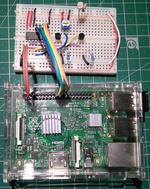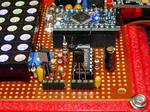Other

“This was a fun little project – and it gave me an idea for a future one. Sometimes, I find that the more complex undertakings, which require more planning, can get to the point that they “take me over” somewhat. At …
Texas Instruments Inc. (TI) is an American technology company that designs and manufactures semiconductors, which it sells to electronics designers and manufacturers globally. Headquartered in Dallas, Texas, United States, TI is one of the top ten semiconductor companies worldwide, based …

Using an MCP3008 IC we will add the ability to read analog values on a Raspberry Pi. The Raspberry Pi unlike the Arduinos natively has no way of reading analog data. By adding an integrated as the MCP3008 we can …

“Feeding a stream of avalanche noise from a reverse-biased transistor base-emitter junction into the Arduino’s MISO pin without benefit of a shift register, this Arduino source code extracts nine bit chunks of random data to drive the 8×8 …

